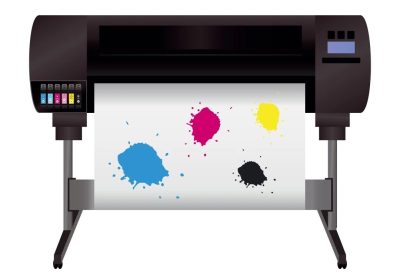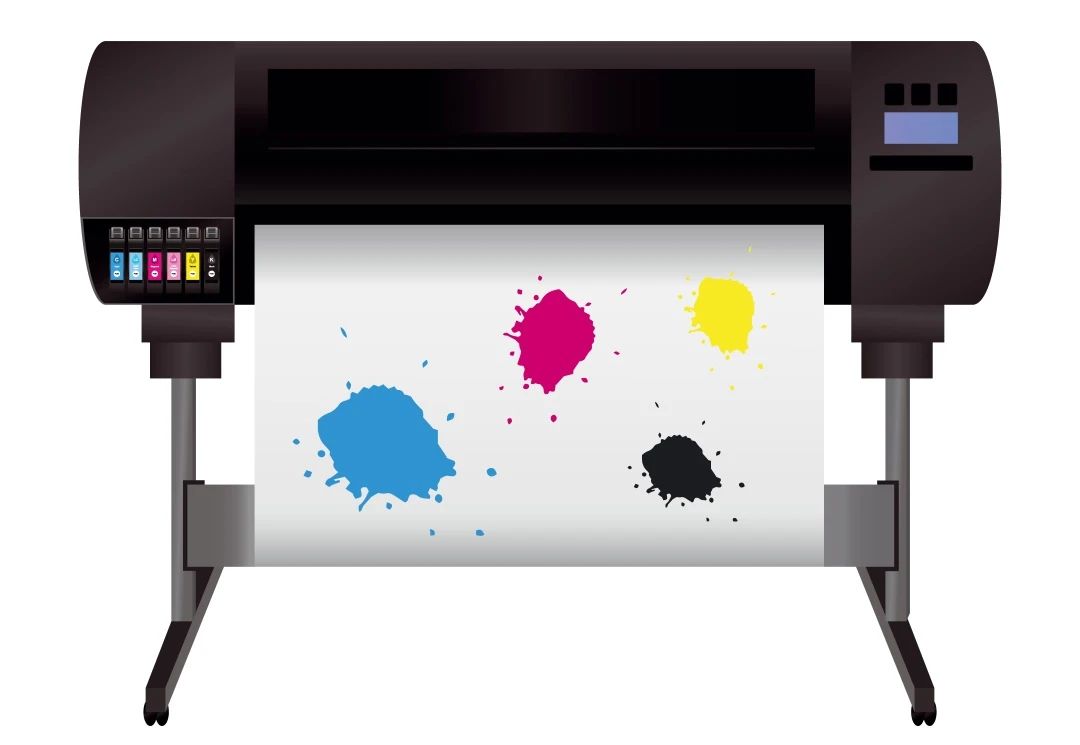Inkjet printing inks can be subdivided into dozens of types, each with its unique features, making it easy to feel overwhelmed when choosing. However, at their core, inkjet printing inks in the domestic market are mainly divided into three categories: water-based inks, solvent inks, and UV inks. Mastering the characteristics, advantages, and disadvantages of these three types of inks is very beneficial for actual printing production work.

Water-Based Inks
**Advantages:**
Water-based inks, as the name suggests, use water as the solvent and contain the least amount of chemical solvents among the three types. They offer high brightness, strong coloring power, fast drying speed, and strong water resistance. Compared to the other two types, water-based inks are natural, environmentally friendly, odorless, and free of volatile elements, making them harmless to the human body. They are widely used in indoor advertising, with representative printing equipment being indoor photo printers.
**Disadvantages:**
Due to their inherent limitations, water-based inks have poor weather resistance, leading to short preservation times for printed materials. Generally, they can maintain color for about a year indoors but may fade and deteriorate within two months outdoors. Additionally, the profit margin per unit is lower than the other two types of inks, significantly reducing their application range.
Solvent Inks
**Advantages:**
Thanks to their compatibility with various substrates, solvent inks are commonly used in inkjet printing. Compared to water-based inks, solvent inks offer better corrosion resistance and weatherability, making them widely used in outdoor advertising. They dry quickly, helping to efficiently complete printing tasks, and unlike water-based inks, they do not require lamination with a cold laminator after printing, saving time and cost. Representative printing equipment includes outdoor photo printers.
**Disadvantages:**
Their disadvantages are also apparent; they use solvents containing volatile substances, posing a significant health burden to operators. Therefore, it is essential to maintain good ventilation in the workspace to minimize the impact of ink evaporation on health. The advertising industry now favors eco-solvent inks, which are more environmentally friendly and effective than ordinary solvent inks and occupy a high share in outdoor photo printing.
UV Inks
**Advantages:**
As the dedicated ink for UV printers, UV inks have strong specificity. They have a unique curing method, with photosensitive curing agents in the solvent reacting with the UV light emitted by the LED cold light source of the UV printer, instantly solidifying and strongly adhering to the surface of flat materials. UV inks offer a wide range of applicability (can print on all flat or cylindrical materials), excellent print quality, and the advantage of rapid curing to reduce production time, making them widely used in inkjet printing.
**Disadvantages:**
The downside is that UV inks are expensive, almost twice the price of water-based inks, so the initial capital expenditure for choosing UV inks is significant. Careful evaluation is necessary when purchasing. UV inks come in rigid, neutral, and flexible types, each requiring different printing substrates. Choosing incorrectly can lead to excessive curling and cracking.
Ink Storage Methods
1. **In cold regions of the north, avoid storing inks outdoors to prevent quality changes at low temperatures. Transfer them to a warmer warehouse.**
2. **Follow the “first in, first out” principle in ink storage and management to prevent ink from affecting its use due to prolonged storage.**
3. **Seal ink storage to prevent dust. Large amounts of dust or impurities can fall into the ink tank or adhere to the label material surface, causing nozzle blockage.**
4. **Safety first; store ink away from fire and heat sources to prevent accidents.**
5. **Maintain a constant temperature in the ink storage warehouse, with minimal temperature differences from the printing workshop. If there is a large difference, move the ink to the printing workshop in advance to stabilize ink performance and ensure high production efficiency.**
6. **Ink has a shelf life; if stored for too long, components in the ink formula may separate or precipitate. Therefore, ink should not be stored for a long time, generally around one year, to avoid affecting print quality or causing printing failures.**


